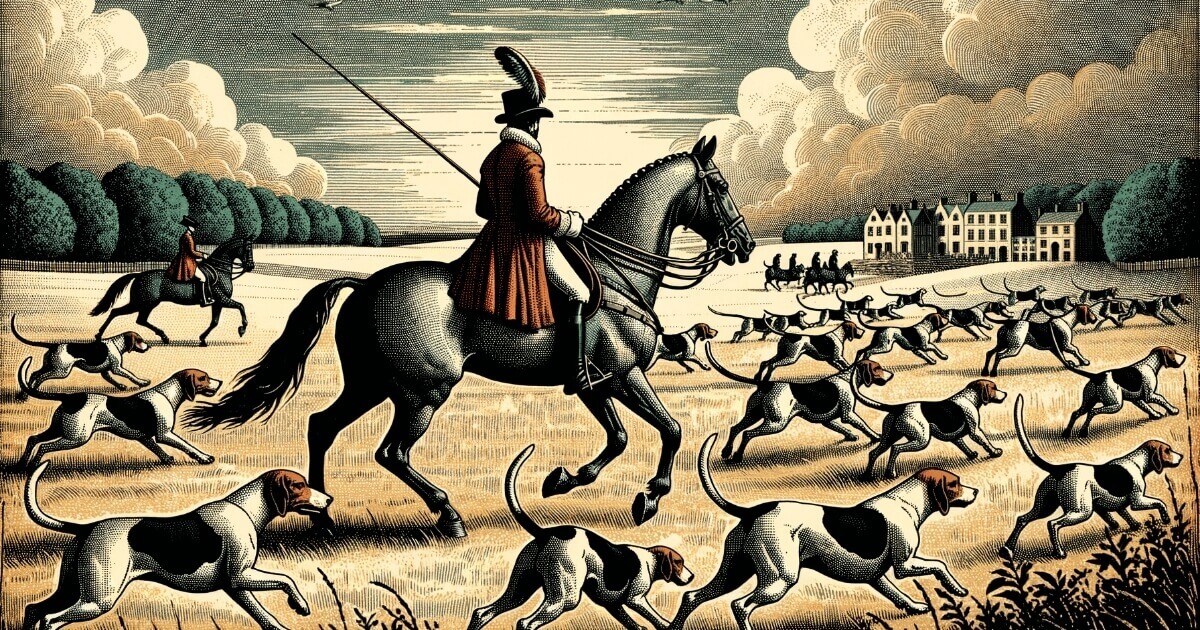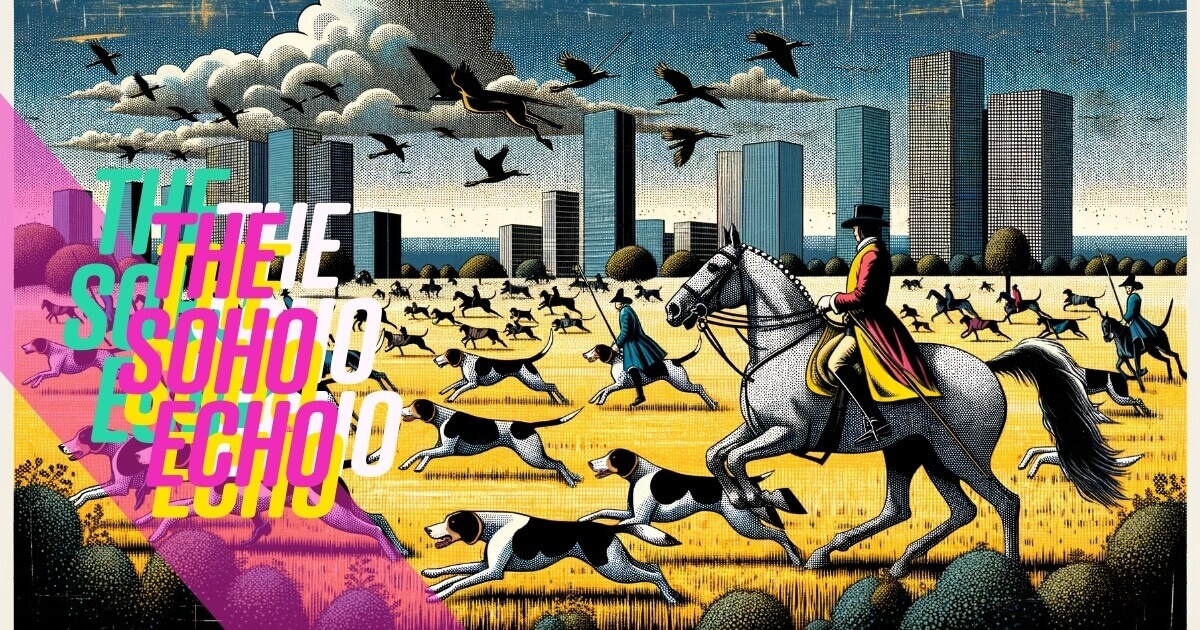From Royal Hunts to Cultural Revolution: Soho's Evolution

Wild Fields: The Echoes of Soho's Open Land Before 1700
A stroll through Soho today might present a cacophony of sounds—a busker's sultry tones drifting from a nearby corner, laughter spilling from the doors of a vibrant café, or the rhythmic thud of feet dancing to the latest beats in an underground club. But before the noise, there were fields. Fields that stretched out like a verdant canvas, where royal hunts would echo across the open land, and where nature's wild beauty painted a picture far removed from the urban buzz that defines Soho in the 21st century.
This article journeys back in time, weaving through the history of Soho, illuminating its transformation from wild fields to the cultural powerhouse it has become. From the hunting grounds of royalty to the breeding grounds of artists and radicals, we explore how the rich tapestry of Soho's past has shaped its vibrant present.
The Royal Hunts: A Prelude to Transformation
In the 16th and 17th centuries, the area now known as Soho was a sprawling expanse of countryside, dotted with lush fields and woodlands. It was a playground for the elite, particularly during the reign of King Charles II, who was known for his love of hunting. The royal hunts that took place in these open lands attracted the attention of nobility and commoners alike, turning the fields into a stage for spectacle and social gathering.
As the king and his entourage galloped through the underbrush, the land resonated with the sounds of hounds barking and horses galloping. This was a time when nature thrived, and the whispers of the wind were perhaps the only thing that could be heard—an echo far removed from the bustling streets of today.
However, as the city of London expanded, so too did its appetite for development. The fields that once flourished with wildlife gradually began to transform under the weight of urbanisation. As the 18th century approached, Soho would soon become a melting pot of creativity, contrasting sharply with its pastoral past.
The Birth of Soho: From Fields to Fabrics
As the 17th century drew to a close, Soho began to shed its rural skin. The transformation was spurred by the establishment of the Soho Manufactory in the early 18th century, which was one of the first factories in England. The area began to attract artisans, craftsmen, and eventually, a new wave of thinkers and artists who would redefine its identity.
With the introduction of textile manufacturing, the fields were replaced by a bustling industry that brought together a diverse community. The streets that had once echoed with the sounds of nature became filled with the clattering of looms and the chatter of workers. This shift marked the beginning of Soho’s evolution into a vibrant cultural hub, where creativity and innovation would flourish.
It wasn't long before Soho became synonymous with artistic expression. The likes of William Hogarth and other notable figures would stroll the streets, inspired by the burgeoning energy around them. The lively atmosphere attracted writers, painters, and philosophers, all eager to contribute to the rich cultural narrative that was beginning to unfold.
An Artistic Revolution: Soho's Cultural Renaissance
Soho's transformation from open fields to an artistic enclave reached its zenith in the 20th century. The area became a bastion for the avant-garde, a sanctuary for those who dared to defy convention. The streets were alive with the sounds of jazz, punk, and everything in between, as new genres emerged and thrived in its intimate venues.
The legendary Ronnie Scott's Jazz Club, which opened in 1959, became a cornerstone of Soho's musical legacy. With its dimly lit atmosphere and the sultry tones of jazz filling the air, it attracted music lovers from all walks of life. The likes of Miles Davis and Ella Fitzgerald graced its stage, leaving behind echoes of unforgettable performances that still resonate within the walls today.
But Soho's charm extends beyond jazz. The presence of art galleries, theatre companies, and live music venues creates a vibrant patchwork of cultural offerings. Take, for example, the iconic Piano Bar Soho, where local musicians showcase emerging talent while patrons sip on cocktails amidst a backdrop of melodic creativity. Here, the spirit of collaboration is palpable, as artists and audiences engage in an immersive experience that celebrates the very essence of Soho.
The Radical Heart of Soho
Soho's rich history is not just confined to the arts; it is also a landmark of social and political change. The area has long been a meeting point for radicals and reformers, a place where ideas have collided and transformed into movements that shape society.
In the 1960s, Soho became a beacon of counterculture, with its underground clubs and radical thinkers challenging the status quo. The rise of LGBTQ+ rights found a home in Soho, as venues such as The Admiral Duncan and The Village became safe havens for those seeking acceptance and community. The spirit of rebellion continues to thrive today, as Soho remains a hub for activism and inclusivity, where diverse voices can be heard and celebrated.
As one wanders through the streets, it becomes evident that Soho is more than just a location; it is a living, breathing entity that embodies the spirit of its inhabitants. The past echoes through the architecture, the music, and the stories shared among friends in dimly lit bars.
Engaging with the Echoes of the Past
To truly appreciate Soho is to engage with its rich history. There are countless ways to immerse yourself in the stories that have shaped this vibrant neighbourhood. From guided walking tours that delve into its artistic roots to live performances that showcase the latest talent, there's always something happening here.
Local venues like The Social and Alfie's are not just places to visit; they are portals to the past. At Alfie's, the eclectic mix of vintage finds and contemporary creations reflects the spirit of innovation that has characterised Soho for centuries. It's a reminder that, even in the face of relentless change, the essence of creativity continues to thrive.
Moreover, participating in community events, art exhibitions, and music festivals can deepen your connection to Soho. The sense of camaraderie among locals is palpable, as artists and audiences come together to celebrate the very essence of creativity that flows through the streets.
A Call to Explore
Soho is a testament to the power of transformation. From its wild fields echoing with the sounds of royal hunts to the bustling streets alive with creativity, it is a neighbourhood that invites exploration and engagement. Whether you're a seasoned local or a curious visitor, there is always more to discover in this cultural tapestry.
As we reflect on the journey from fields to a vibrant creative hub, let us celebrate the artists, radicals, and dreamers who have contributed to Soho's legacy. The echoes of the past are not merely remnants; they are the foundation upon which the future is built. So step out onto the streets of Soho, attend a gig, support local talent, and immerse yourself in the stories that continue to unfold—because every corner of this remarkable neighbourhood has a tale to tell.
